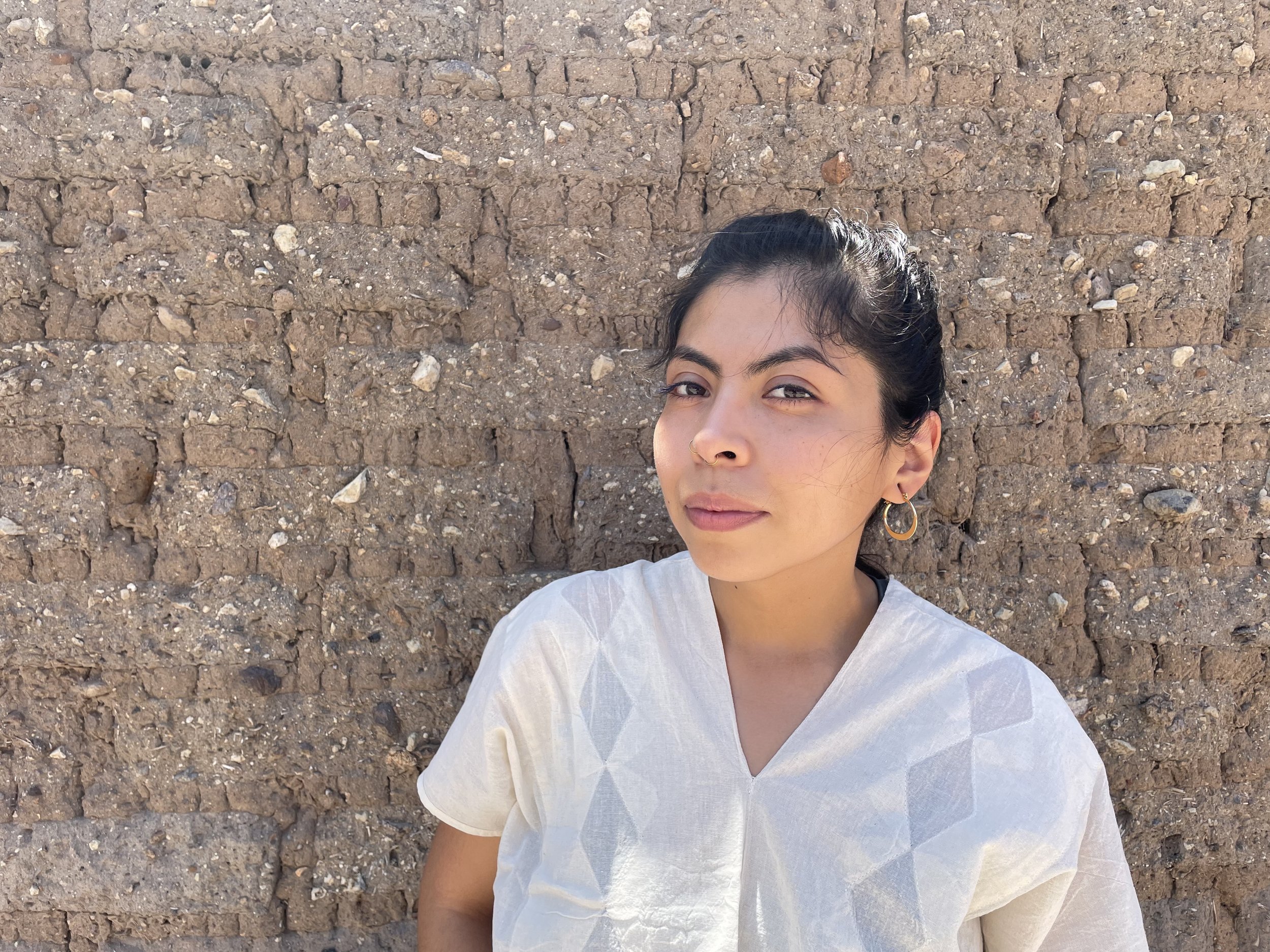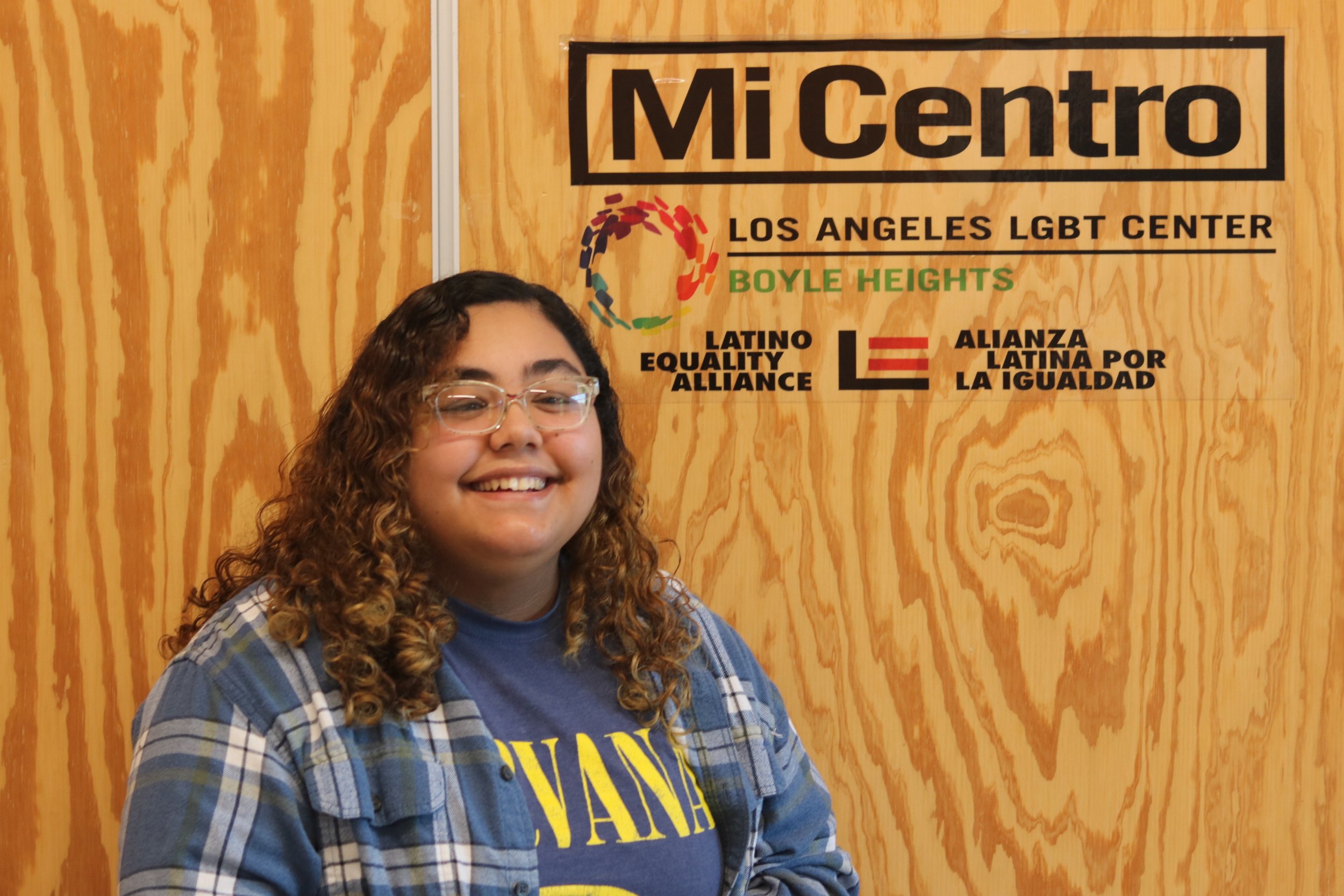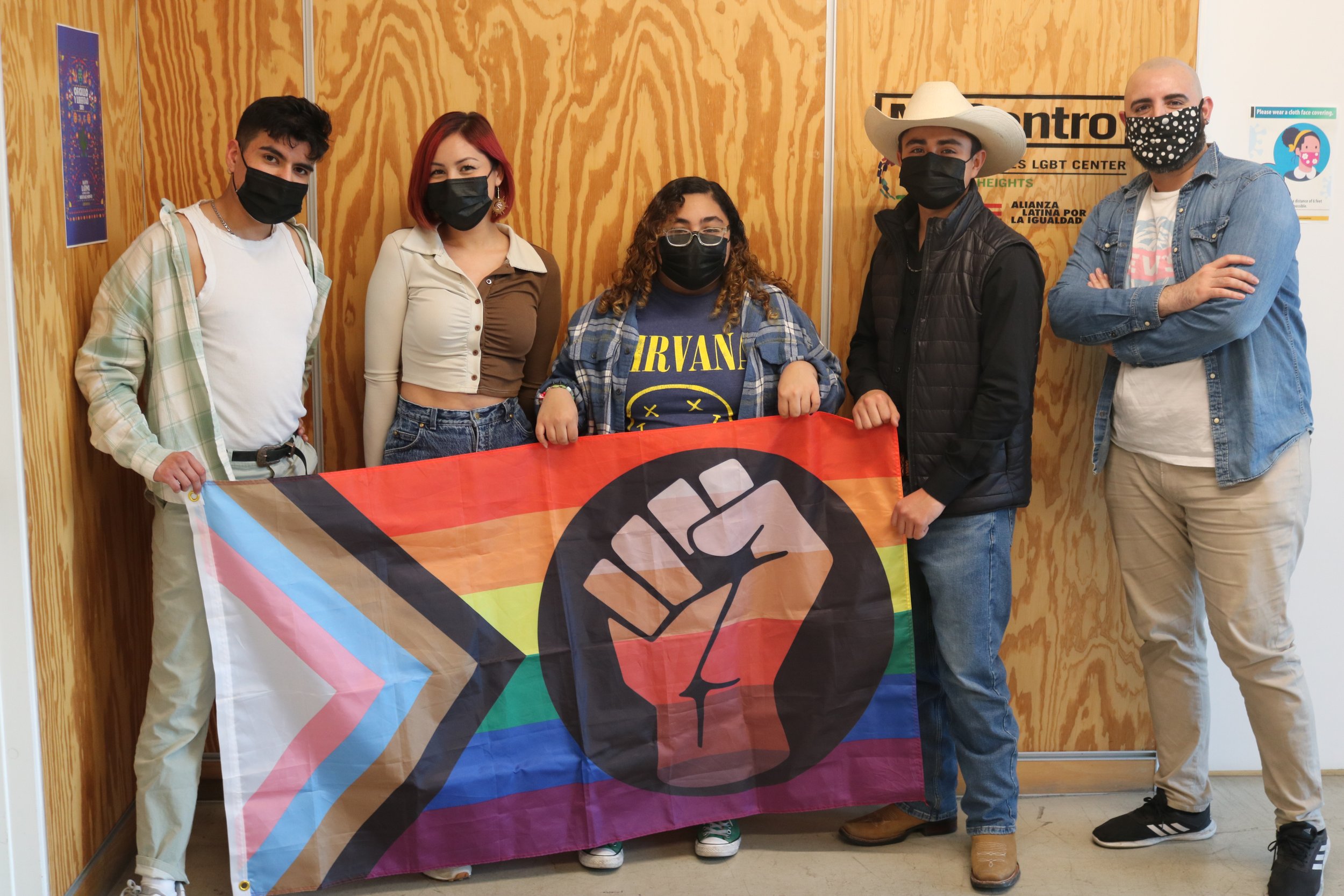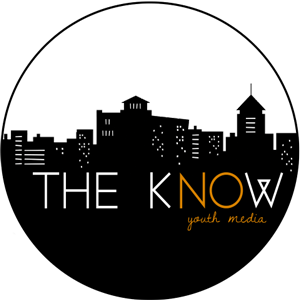Learning to live with Covid and regaining some semblance of what life used to be.
Finally! Maskless
More than 750 days since we were first required to wear masks indoors, California Governor Gavin Newsom lifted 95% of executive orders concerning COVID-19. This came with great relief to so many. I talked with a couple of people and asked them how they felt.
****
What do you think our “new normal” would look like?
“It would be nice to be able to walk around and breathe freely without the need for a mask again, but wellbeing and peace of mind ultimately take precedence for me. Regardless of the changed mask mandates, I will continue wearing masks for a while.”
Karen Chow, 19, Santa Cruz, CA (originally lived in Monterey Park, CA)
How do you think the coronavirus variants will affect everyone in the long run?
“I think it’s [COVID-19] going to be just like the flu.” Anjali Prabha, 21, Santa Cruz, CA
Was the mask mandate helpful?
“I think they were helpful, at least for social reasons. Even if they had no effect on spreading the virus, it felt like I was doing my part.”
Thomas Patterson, 19, Santa Cruz, CA
Pollution-Burdened LB Youth Fighting for a "New Normal"
For many Californians, “earthquakes” aren’t out of the norm. But the rotten egg-like odor may be. It's how 16-year-old Dennise Lievanos knew the shaking her community experiences isn’t actually an earthquake. It’s just another of the disruptions to daily life that has been forced upon residents living near refineries.
“When one of those first happened, the houses shook from side to side, but everyone really took it as like, ‘Oh, it's an earthquake. It's nothing too serious,’” Lievanos said. “But then, this egg smell started coming and we were kind of confused.”
Lievanos has lived in this area of West Long Beach her whole life, and she said the exposure to pollution caused members of her family to develop asthma.
West Long Beach is known for facing higher exposure to pollution than other areas of the city, especially more affluent areas. Residents of the area live next to multiple refineries and the 710 freeway, which is heavily used by truck drivers moving goods to and from the Port of Long Beach and the Port of Los Angeles. Both ports describe themselves as among the busiest ports in the nation.
Business as Usual
The three most recent versions of the California Office of Environmental Health Hazard Assessment’s CalEnviroscreen, which collects emissions and environmental data for census tracts, show that most of both North and West Long Beach rank between 80% to 100% in pollution burden.
Emergency department visits for asthma and cardiovascular diseases in these areas also rank between 80% and 100%. Rates in these regions only dip into the 70s in the 2014 CalEnviroscreen.
Ruthie Heis, a freshman at Long Beach Polytechnic High School, who also lives in West Long Beach, has experienced seeing the impact these emissions have on residents’ health as well.
“Growing up in Webster [Elementary], we were assigned buddies to help carry classmates when they could no longer walk to the nurse's office because they had asthma attacks,” Heis said.
Heis explained that on days when emissions from refineries were high, students would have to stay indoors.
“We were running around once and there's a kid who was running around and suddenly he just dropped and the bell rang. We all had to rush back inside,” Heis said, recalling a day during a physical education class.
Heis felt lucky to not experience the respiratory illnesses many others exposed to these conditions live with, which some of her friends do. Rohan Reddy, who Heis works with as a part of the Long Beach Green Schools Campaign, had to use his inhaler in between parts of a speech at a rally, where he was speaking about the environment and his asthma, according to Heis.
Reddy, who lives in the Los Cerritos neighborhood near two freeways, said he has been dealing with asthma since he was six months old.
“Every morning, when I wake up I do two things,” Reddy said. “I check the weather and I check the air quality.”
He does this to know two things, if he needs to prepare to use his inhaler and if he needs to stay indoors as much as possible. Though the start of the pandemic led to him seeing better air quality than is normal, the pandemic itself made going outside something he couldn’t do anyways.
The prevalence of these emissions has had long term impacts on the areas’ residents. Per the Long Beach Health Departments’ community health assessment, areas like North and West Long Beach have lower life expectancy than parts of the city closer to the coast and farther from freeways or refineries.
Envisioning a new normal
While the environmental burden these youth experience has largely remained the same, they’ve recently found themselves getting involved in campaigns aiming to change their day-to-day conditions.
“I'm a child and I'm out here, spending my free time advocating,” Heis said. “So I want to see older generations putting in the effort to make a difference and kind of allow us to do the things that we're proposing.”
As members of the Green Schools Campaign, Reddy and Heis have been advocating the Long Beach Unified School District to transition away from relying on fossil fuels for the school district’s energy needs. But their hopes lay beyond the school district.
“I know that a major contributor to the pollution is obviously burning fossil fuels, cars, power plants, oil refineries, things like that. So if we could start to transition off of fossil fuels to clean, renewable resources that would help to improve life for everyone,” Reddy said.
Meanwhile, Lievanos has become involved with the local organization East Yard Communities for Environmental Justice, which has given her a place to connect with other local youth experiencing similar issues — and learn how to advocate for better conditions. She recently joined the organization in advocating against a railyard proposed to be built in her community, which has currently been delayed.
“The more you start speaking the more you start valuing your own words and your own perspective,” Lievanos said. “And, you know, our mentalities change to like no, we're gonna make them hear us. Like if they don't want to hear us, they're gonna hear us,” referencing organizations like the ports.
Lievanos hopes her efforts can help play a part in changing the environment her community lives with, diminishing the headaches and heat they experience.
“I just hope, one day I don't have to ride the bus to school and see all this smoke from refineries and instead see more green [space], more blue skies,” Lievanos said. “Stars up in the night, like that's literally what we all hope for.”
Entrepreneurs Re-evaluate, Build Community in South LA
While the COVID-19 pandemic caused the loss of jobs for many, it also prompted others to start new businesses. According to the Census Bureau, the highest number ever of new businesses were created in the U.S. during 2020 —more than 4.4 million new businesses. That was a 24% increase from the previous year.
For some, Covid provided both the time and space to re-evaluate and focus on opportunities and goals that were important to them. As a result, the Zapatistas-inspired Pueblo Café was born. Three young entrepreneurs are using the age-old co-op model to help change a traditional exploitative work system while building a community in the South Los Angeles neighborhood they were raised in.
“From Chiapas to South Central, we envision un mundo donde quepan muchos mundos (a world where many worlds fit).” Boyle Height Beat’s Katlyn Valdez reports on the coffee pop up.
Ellie Guzman, Pueblo Café co-founder
Why Pueblo Café? For me, Pueblo Café is a resistance tactic. It’s a means to create alternatives to current business models, sustain a community-run space in the midst of gentrification and build & strengthen bridges among our neighbors/comrades.
Kevin Martinez, Pueblo Café co-founder
Why Pueblo Café?
Simply put: “It takes the hood the save the hood.” With Pueblo Café, we hope to create a space that is by the community for the community. One that is safe and honors the local mom and pops businesses that have served us for many years. I believe that South Central deserves coffee that is not just affordable and tasty, but also high-quality because our people deserve that and more.
Jazmin Garcia, Pueblo Café co-founder
Why Pueblo Café?
This cooperative is forming out of the love we have for our community. It’s about creating spaces that empower us while pushing back on the systems that exploit people. It’s about showing each other love when we need a little extra boost or a comforting warm cup on the more difficult days. Coffee reminds me of sitting with my family in the evening, it reminds me of comfort, and it reminds me of my family’s roots. I’m looking forward to sharing a cup with you all and learning what coffee means to you.
Long Beach Students Feel Intimidated by SSO Presence
To some, a school may represent a safe space to learn, make friends and gain the knowledge and skills for life.
For 17-year-old Jesse Guardado, who attends Cabrillo High School, located a block away from the Long Beach Police Department’s West Division station, the school was not a safe space.
The police station was a representation of the violence that surrounded them and created a tense and intimidating environment even within the school walls, Guardado said.
Violence in and around schools was not exclusive to Cabrillo. In September 2021, an 18-year-old named Mona Rodriguez was fatally shot by a school safety officer (SSO) near Millikan High School. The Long Beach Unified School District (LBUSD) fired the SSO, but these events have refueled conversations about what it actually looks like to feel safe in schools.
Lucas Higbee, a chemistry teacher at Millikan Senior High School, said school safety is difficult to assess. He added that feeling safe is different for every student. While some may perceive random backpack checks and the presence of SSOs a safety measure, others may not.
“[For some students] it makes it so that they come to school and the first message they are told is these members of authority don’t trust you,” Higbee said.
According to the School Safety and Emergency Preparedness Division Manual, LBUSD employed 13 SSOs stationed on campus and three district security officers who patrolled the property at night. These officers had the power to use pepper spray, physical force, firearms and impact weapons, such as batons.
The SSOs can cite, but not arrest, and are not employed by the Long Beach Police Department, yet Guardado often found it hard to tell the difference. Despite having limited contact with SSOs, Guardado viewed them as an aggressive presence on campus.
“That power dynamic makes it more than enough to paint them as an aggressive authority figure,” Guardado said. “Are they cops? Or are they supposed to be school resource officers? Because I can't tell.”
Milikan junior Emma Huynh perception of campus officers mirrored Guardado’s.
“They make people feel a little bit uneasy because they kind of just standing around and don't really interact with anybody,” Huynh said. “They're very present without having to present themselves.”
Huynh described herself and her friends as feeling intimidated by SSO presence on campus, especially knowing that they have guns.
“We’re just kind of unsure of what they would do, but we all subconsciously know that they're there to protect us,” said Huynh.
Guardado described them as “hawks.”
“As a person of color, it feels extra terrifying because it feels like they have the authority to do whatever they want with you and not face the consequences for those actions,” Guardado said.
And although they are supposed to ensure student safety, Guardado pointed out that these officers, and school faculty in general, are often not adequately prepared to curtail situations. Instead, they resort to merely separating fights and taking students to the office.
Higbee believed that to achieve de-escalation, it is necessary to dismantle the SSO program and instead hire trauma-informed individuals appropriately trained in how to deal with these conflicts.
Long Beach Police on the scene in the 6200 block of E. Spring Street where a shooting occurred between a School Safety Officer and a possible student from Millikan High School in Long Beach on September 27, 2021. Multiple students aboard an LB Transit bus and walking by witnessed the shooting and were detained to be interviewed by officers. Photo Credit: Brittany Murray/MediaNews Group/Long Beach Press-Telegram via Getty Images
In response to the pandemic, Cabrillo HS has emphasized the importance of mental health and provided students with resources such as the Wellness Center, with similar centers at LBUSD schools like Millikan and Long Beach Polytechnic High School But Guardado felt it was also important to focus on other aspects of mental health, such as the impact of systemic racism, homophobia, transphobia, ableism and other forms of oppression.
Hiring full-time therapists and psychologists was a crucial part of ensuring adequate mental health assistance. Cabrillo’s current psychologists are not full-time employees and are only on campus a few times a week Guardado said.
As someone who is graduating soon, Guardado would like to see schools provide more access to tangible resources. Guardado mentioned Cabrillo Closet, a campus resource that provided students with donated clothes, school supplies, and basic hygiene products. Anyone can walk in and take what they need, for free. Poly has The Rabbit Hole, which functions in the same way. Guardado suggested all schools across the district have something like this available, and that running it could even translate into internship opportunities for other students.
Guardado said it was important schools have these conversations with students and directly ask them about what resources and changes they would most like to see, rather than the usual rare to no acknowledgment.
“A clear-cut way to directly help students is asking them what they want, what they need,” Guardado said.
The Return of In-Person Learning
Year two of COVID saw the majority of Long Beach Unified School District (LBUSD) students return to in-person learning, but there wasn’t talk about what that experience had been like for them. We've heard of teachers who were more lenient and compassionate while other students struggled to keep up or felt unsafe in an environment where they are exposed to bullying, disease and police violence. In a changing world, what's changed in our schools? What hasn't changed in our schools? Via student interviews, we explored this in a podcast that will provide a picture of how schools were functioning and how that impacted students’ academic performance and their overall well-being. VoiceWaves’ Briana Mendez-Padilla reports on how LBUSD attempted to adjust.
Identity Shift
A lot of folks felt a shift in their identity during COVID shelter-in-place orders — with many exploring different genders and sexualities. Young people had time to sit with themselves and have life-changing realizations about being transgender, nonbinary, queer, bisexual and more. The kNOw’s Ashens Limon spoke with peers about embracing self-discovery.
New College Grads Struggle to Find Work
Twenty-three-year-old Sofia Matzaganian spends 4-5 nights a week bussing tables at a busy pizzeria in Hollywood. She recently took a second job working a reservation desk at another restaurant.
After graduating last spring from California State University Long Beach with a Bachelor of Arts in Journalism, this was not what she thought she’d be doing
Matzaganian earned about 16 dollars an hour but from bussing tables can earn up to $100 a night in tips. She lives in the Highland Park area of East Los Angeles and lives with three roommates.
“It’s the only way to survive and live on your own in Los Angeles,” she said. The 2021 graduate said she now appreciates the fact that she went to community college first, which gave her the chance to discover what she wanted to do without spending thousands of dollars and creating a huge amount of debt.
While she heard about a job market with a lot of possibilities, it hasn’t been her experience. Matzaganian said she took the restaurant job to earn some money and continues searching for jobs in her field on Indeed and company websites.
Matzaganian said that graduating during a pandemic, has complicated her job search.
“It’s really hard to get a job these days,” Matzaganian said. “I thought there would be a lot more [jobs] than there are. Like, there's kind of a shortage of jobs, but there's not.”
Many other recent college graduates share the same struggle. An April 2021 release from the U.S Bureau of Labor Statistics showed that in October 2020, 67.3% of graduates that received a bachelor’s degree in 2020 were employed, a decrease from 76% in October 2019.
“It's kind of just a discouraging thing, because I worked really, really hard in college, and I didn't want to still be doing like bussing or waiting tables,” she said.
Matzaganian had a remote internship with Simon Wolff, a luxury CBD brand, right before she graduated, where she created social media, wrote blog posts and newsletters.
But she said she felt like she missed the opportunities to interact and network in person.
“Even though I loved my internship and the people that I work with were great, there was a disconnect,” she said. “Everything was done on email or text messages and things got lost in translation. I never got to physically be in an office, so I feel like that's something that I definitely missed out on.”
Senior Director for Career Engagement at the University of Southern California, Lori Shreve Blake, understands the struggle for young graduates and agrees that the hiring process for recent graduates has definitely been different than for those who graduated before the pandemic.
“They were going through the hiring and instead of doing it in person, they were doing it virtually,” said Shreve Blake. “And then once they selected the candidate, the candidate never came to the office; they were onboarding that employee virtually. So all that was totally new.”
Matzaganian hoped to land a job in social media marketing after graduation but said it had been difficult getting to the interview stage. For the hundreds of jobs she applied to, she usually doesn’t even get a rejection.
“My biggest frustration is not really knowing how to stand out on a resume,” she said. “I know like in an interview, I’d be really great.”
Another issue in the job market seems to be the experience needed to get an entry-level job.
Of the approximate four million jobs posted on LinkedIn, the large job search and networking platform, nearly 35% of job listings for “entry-level” opportunities asked for three or more years of prior work experiences. For certain careers, it’s even more difficult. More than 60-percent of listings for entry-level software and technology services jobs require at least three or more years of experience.
Shreve Blake said job applicants shouldn’t be discouraged about not having the years of experience listed in job descriptions.
“Don't feel like you've got to meet every criterion of that job description in order to apply. It's not the job seeker’s job to qualify you, to screen you in or out, it's the hiring manager.” She also says networking is the best strategy to help land the job you desire.
“Bottom line is jobs come through networking, one person leads to the next person, so if you start to network and meet people in the organization you want to work for work, even if you don't have the [experience], and they like you, you can get the job.”
Shreve Blake said that she does believe, however, that there are plenty of opportunities for recent college graduates and that networking is the best strategy to land jobs.
Pandemic Woes Amplify LGBTQ+ Youth Challenges
Mental health struggles among youth have been on the rise for more than a decade. According to national surveys, in 2019 one in three high school students, and 50% of female students, reported feelings of sadness or hopelessness – a 40% increase from 10 years prior.
Add to that the pandemic.
Along with its high death tolls, stay-at-home orders, fluctuating safety guidelines and overall life-changing impacts, COVID-19 has amplified an already pressing issue and contributed to unprecedented challenges for today’s young people — especially those who identify as LGBTQ+.
Late last year the Surgeon General issued Protecting Youth Mental Health, an advisory illustrating how a public crisis in the United States may be more dire for those already facing additional challenges. According to the advisory, youth who may be more prone to mental health challenges include racial and ethnic minorities, LGBTQ+ youth and those living in immigrant households. Queer people of color or from immigrant families — those who fall in more than one or all of the groups — are at even greater risk.
For many LGBTQ+ youth, the coronavirus made the effort to find their identities and acceptance even more difficult. Without outside support or safe spaces, the pandemic contributed to even more isolation and despair.
“COVID’s like a nagging thing in the back of your head that you have to deal with, knowing it might never go away – that your life has changed forever and nothing will ever be exactly the same,” said Xitlali Mendoza, a 16-year-old junior at Felícitas and Gonzalo Méndez High School in Boyle Heights.
Mendoza said that due to the pandemic she missed out on her quinceñera and Sweet 16 birthdays, two things she grew up looking forward to. It also made her feel lonely.
Mi Centro, part of the Los Angeles LGBT center, offers youth a safe space in Boyle Heights. Xitlali Mendoza (left), a junior at Felicitas and Gonzalo Mendez High school, says COVID has changed her life forever. Joshua Modesto, 18, (right) said COVID was isolating and led to depression. Photo Credit: Jaqueline Ramirez
“I wasn’t really in the position to go out and interact with other supportive queer people,” she said.
Alvin Lopez, a health educator for Bienestar, a Los Angeles non-profit that works with queer Latino youth in Los Angeles, said a lot of young people have come to him crying, saying they feel alone because of the pandemic.
“It’s very easy to get depressed when you’re in a situation like the one we’re in now, especially when you’re trying to understand who you are while being isolated in a home where you might not feel supported, ” said Lopez.
According to The Trevor Project’s 2021 National Survey on LGBTQ Youth Mental Health, more than 80% of the 35,000 people surveyed stated that COVID-19 made their living situation more stressful, with 70% stating their mental health was “poor” during most of the pandemic. Forty-two percent reported seriously considering attempting suicide in the past year.
Eighteen-year-old Joshua Modesto, a student at Theodore Roosevelt High School in Boyle Heights, was living in Mexico when the pandemic started and encountered several obstacles. There weren’t resources to even get tested. And Modesto said his neighborhood was not very accepting. As a result, he had to hide who he was.
“Things really began to affect me when I was alone in my house and didn’t want to go out much because of COVID,” Modesto said. “I began thinking of all of [the] problems I had in the past when I was younger, and it depressed me a lot.”
Even before COVID, for many Latinos growing up LGBTQ+ can prove to be a difficult and isolating experience. One reason according to Lopez mental health treatment is often stigmatized and looked down upon in the Latino community. Another reason is the limited accessibility to counseling at many schools.
Los Angeles’ Latino Equality Alliance (LEA), the non-profit that operated the Mi Centro LGBTQ+ center in Boyle Heights, has been a safe space for queer and trans Latinos since 2015.
Mi Centro provided a meeting place for youth and adults, but the pandemic shut most public places down. LEA development coordinator Yesenia Mendoza said the novelty of online learning and programming quickly faded.
“Something that we didn’t realize is that a lot of queer youth really crave safe spaces that are physical, over virtual ones,” said Mendoza. “A lot of Latinx youth aren’t open at home, so they like going to physical spaces that are queer-friendly in order to feel safe and supported. There hasn’t been a lot of that since Covid.”
Seventeen-year-old Doris Coronel, a senior at Esteban Torres High School who identifies as gender non-binding and whose preferred pronouns are they/them, said they felt like they missed out on a lot of things and felt the constraints of not being able to meet with others.
“There’s not a lot of space you can go to get support without it being really draining,” they said. “There are some [places] to help you, but it doesn’t feel the same. It’s all behind a screen. When you are in-person, it makes the connection feel more real.”
Mendoza said she believes the added stress of COVID made it difficult for some youth, who are searching for their own personal identities, to get through most days.
“When it comes to your mental health, your identity is everything,” said Mendoza. “That’s who you are, that’s who you carry. If you don’t have a sense of confidence in your identity, it can be really easy to feel alone. It affects all aspects of your life, so not having a handle on it can really put your whole world in shambles.”
She hopes that once we get through the winter and the latest spike of cases, things will slowly return to normal and youth can once again find the in-person support they need.
Coronel said that after struggling during the first year of the pandemic, in 2021 they got more involved in their community, became president of their school’s pride club, and also joined an art and running club. While they said they spent most of their youth not knowing who they were or what they wanted to be, they now have it more figured out.
“The pandemic was really rough for a lot of people, but it helped me better understand my gender identity,” said Coronel. “There’s good and bad that comes with every situation in life.”
We’ve All Experienced it — The Trauma
There have been studies upon studies about the effects of trauma on people; what happens to the human body and specifically the brain when it experiences loss, death and violence. Most people have deep empathy for others going through an ordeal, in its many forms — like the death of a loved one, a life-changing accident or when veterans are diagnosed with PTSD.
But our society doesn’t have a history of acknowledging all forms of trauma, and we haven’t done well dealing with the collective upheaval the entire world is facing right now due to the COVID-19 pandemic.
For a while, things started to look up. With vaccines, boosters and increasing normalcy about virus safety (masks, frequent hand washing and social distancing), people started to return to a new version of normal life. We were able to enjoy coffee shops and libraries again, participate in holiday celebrations with family and share meals with close friends. But in the winter with a surge of cases due to the omicron variant, our country plunged back into different degrees of isolation.
We have been living through the COVID-19 pandemic for two years now (and counting), and it might be easy to overlook or forget about the mass trauma we are all still experiencing because it becomes normal. A whole year of isolation, the near-collapse of our government, distrust in science and the medical industry, the millions of deaths — all at once. These occurrences persist, and even still, can be easy to forget, or more accurately, ignore. With everything that has happened, are people really ready to return to life as normal?
An April 2022 report found that 48% of young adults struggled with mental health during the height of the pandemic. In addition, leading psychiatrists and reports said that collective trauma will probably be a global issue post-pandemic, and we are already seeing signs of that.
Lack of motivation, exhaustion from social situations and increased anxiety are what many people have been dealing with recently, and they are all symptoms of experiencing the COVID pandemic. Or more accurately, the symptoms of trauma.
We should see a big change in how our society accommodated and supported this new surge of mental instability. Unfortunately, the working class is being failed yet again. With push after push to get life back to normal, people are overwhelmed and exhausted. We need better work conditions and culture, more rest and support and less exploitation. These are the things people have been fighting for decades to get, and we need them now more than ever.
The past year has proven that for many, working from home was a much better solution to a lot of problems. It allowed for just as much, if not more, productivity with the added bonus of more rest and flexibility. We saw people explore hobbies and spend more time with their children, in addition to less pollution from all the travel time. This past year was proof that there are other ways to operate an economy without the exploitation of people.
In the meantime, while everyone struggles, it’s important to help each other. Stay connected to loved ones, check in on friends. Be generous, wherever possible, because everyone in the world is struggling right now. Offer kindness when and where you wouldn’t usually. Most importantly, do the best you can in taking care of yourself — mental and physical health included. These things won’t magically make everything wrong in the world right now go away, but hopefully, they can make life more bearable (and hopefully a little joyful, too) while we are in such tumultuous times.
Teenage Businesses Thrive During Pandemic
Meet four teens who were able to utilize extra time that the COVID-19 pandemic afforded them to begin their journeys on creating their own small businesses. What was their driving motivation, and how were they able to navigate the pandemic to ensure they were successful? YR Media's Destiny Pinto takes us into their world and how these teens approach their businesses now in our "new normal.”
Zero Social Skills After COVID-19
March 13, 2020: that was the day the world stopped. It was the first time COVID-19 felt real. Everything was so sudden; it was jarring, it was scary. But at the start when it was all still so new, it didn’t feel permanent.
What started as a couple of weeks turned into a couple of months, and now, two years later, we’re still trying to get through COVID-19 and things are more uncertain than ever.
The lockdown was long and exhausting for all. Many struggled to stay afloat and continue to struggle with no end in sight. But at this stage in the pandemic, many have struggled in new ways.
As people returned to school, work and whatever else normal life may look like, many found it difficult to socialize and be around other people again. To be frank, people’s social skills were obliterated over lockdown, and it doesn’t end there.
A lot of people experienced intense declines in their mental health during quarantine and felt more anxious, depressed and exhausted after being around others. Now that the world is trying to return to “normal,” many don’t feel ready.
Before the lockdown was lifted, most knew it would be hard being around others again. Doing things in-person again was extremely difficult; people were anxious around others, and didn't know how to interact with each other anymore.
Fresno City College freshman Stephanie Gonzalez, 18, felt as though she had zero social skills left after lockdown.
“Now that we’re going back to doing things in person, it’s extremely nerve-wracking,” Gonzalez said. “I feel uneasy about any social settings now.”
Gonzalez struggled to get through her first semester of college because of the anxiety she felt being around her fellow students.
“To be honest, I don’t know how to act or what to say to people anymore,” she admitted. “It’s been difficult going into college like that expecting much success; I’ve let myself fail assignments because it’s so hard to speak to people in my classes.”
Gonzalez was not alone. Many students who started going to school in person again found out how much more exhausting it can be.
Ashens Limon, 17, went back to in-person classes when schools reopened in August 2021. One month later, Limon transitioned back to online classes to finish senior year.
Since the lockdown, Limon had taken on a lot of responsibility by helping out with his younger siblings.
“They’ve relied on me a lot since the lockdown began, more than our mom even,” Limon said. “It’s super hard keeping up with it all.”
With schools and daycares closed down, Limon was responsible for them. Limon made their food, helped with their schoolwork and just made sure they felt okay through it all.
“I spent so long just worrying about my family, looking after my siblings and trying to get through the pandemic, I don’t really know how to be normal around other people again,” Limon continued. “Being around [people] is super draining, especially in school. I felt drained just being around my friends for a couple of hours,” prompting him to make the move to switch back to online learning.
Gonzalez and Limon are only a few examples of how the pandemic impacted society. Countless people have felt their mental health decline dramatically across the country.
According to the COVID-19 and Life Stressors Impact on Mental Health and Well-being study (CLIMB), 8.5% of the participants surveyed had depressive symptoms before COVID-19 and 27.8% had depressive symptoms during the pandemic in April 2020. In the most recent CLIMB study, it revealed that the number had grown to 32.8% in April 2021.
The study also showed that lower-income communities, where COVID-related stressors such as job loss and housing instability were more common, experienced higher rates of mental health issues. But despite the survey showing that people experienced fewer stressors in 2021, mental health issues grew.
Youth mental health in the country especially took a hit. For a long time, young people have struggled with their mental health, and the pandemic only exacerbated this.
The American Academy of Pediatrics (AAP) reported that since the start of the pandemic, there was a dramatic rise in visits to emergency departments for all sorts of mental health emergencies, including suspected suicide attempts. The decline in youth mental health was so intense, AAP, along with the American Academy of Child and Adolescent Psychology (AACAP), and the Children's Hospital Association (CHA), declared a national state of emergency in children's mental health. In their combined press release, AAP President Lee Savio Beers attested, “Young people have endured so much throughout the pandemic, and while much of the attention is often placed on the physical health consequences, we cannot overlook the escalating mental health crisis.”
If one thing rings true in Beers’ words, it’s that young people, like much of the world, have endured a lot, and they are all still enduring a lot.
“When my parents lost their jobs, we all felt uneasy,” Gonzalez recalled as she looked back on the more stressful moments of the pandemic. “Our main source of income had stopped, and nothing was open so I couldn’t get a job. Everything just sort of flatlined.
“We had to live off of what we had saved. It was scary; it felt endless,” she continued. “I was in a really dark place mentally that I’m still struggling to come back from.”
Like Gonzalez, the vast majority of people went through a lot during the pandemic and found it hard to return to business as usual. Quarantine ended as soon as it began, and for people like Stephanie, that was a lot more jarring.
“All of a sudden we were shoved back to normal and everything opened up again,” she said. “I don’t think I had enough time to process everything that happened, everything that’s still happening.”
The pandemic has been an excruciatingly long, stressful experience. As we hit the two-year mark, it’s a hard process to recover our mental health or regain our social skills. People are tired, and finding it harder and harder to find hope that this will end. Many find themselves battling to stay on top of things, or even to find the motivation to get out of bed in the morning.
Moving forward, it is important that we acknowledge the emotional impacts of COVID-19. People have survived so much since March 2020, and it started to take a toll on them. As our communities work to remedy the effects of the pandemic, they need to make mental health a priority as well. People will not be able to start healing until they do.
Working in Retail: Miss Me With That Job
For many, including myself, the COVID-19 pandemic has made us re-evaluate the way we work.
I graduated high school in 2018 and was eager to get a job. When school started in the fall I was in college full-time at San Francisco State University and I just wanted a gig for some spending money. Throughout my time in college, I would go on to work at three different retail jobs and one customer service position at a spa. But over time my priorities changed and I went from wanting to work to needing to work to pay my bills.
When the global pandemic hit in early 2020, everything about the way we worked changed. Companies and schools were switching to work from home and many of us got a taste of what it was like to work in an everchanging and unfamiliar environment.
As we entered the second year of the pandemic, a shift began in the workforce that is now known as the “Great Resignation.” In November 2021, a record 4.5 million people quit their jobs. Unsurprisingly, the retail and food industries lead the way in these quits. Workers are tired of low-paying and stressful work environments.
So many took to social media and proclaimed riddance of their jobs and looked forward to embracing a new lifestyle that nurtured good wellbeing.
I spoke with Marc Covos, a 24-year-old working in retail in San Francisco, about his thoughts of the “Great Resignation” and working in retail selling watches.
This interview has been edited for clarity and length.
NR: How long have you been working in your current retail job?
MC: About to be two years.
NR: Do you see yourself staying in the retail industry long-term?
MC: No. It’s a very stressful job. I feel like what makes this stressful is just always having to please everybody. I have to put on this facade that I'm always going to be in [a] happy mood. Even if I have tough times going on back at home, I need to come to work with a smile on my face. It takes a lot of your energy to be greeting people every single day, help them, making sure that they get the best service they can get. Because it could be the smallest thing that would make somebody mad and [leave] a review on you. And then there goes your image at work.
It's hard-working retail with COVID You never know when you're just going to get dropped from your job or they're going to lay you off. So to be going week in and week out, hearing about all the cases that are going on, it kind of scares you because I got rent to pay. I need to put food on the table. It's a scary thing to always know [that] at any moment I can get cut off.
NR: Do you notice a difference in working in retail prior to the pandemic versus now?
MC: In San Francisco, we've been having a lot of break-ins, a lot of robberies and just a lot of crime [in] the area that I work. It's a scary thing to look over your shoulder every single night when you're closing. We're really understaffed [so] I have to close by myself sometimes, and I have to realize there can be just somebody that comes in or a group of people that comes in and just rob the store. You don't want to think of stuff like that, but at the same time, you got to know it's a possibility.
NR: What is your take on the Great Resignation and millions of people quitting their jobs, including retail?
MC: I don't blame anybody that wants to quit their retail or their restaurant jobs because you never know when you're going to get dropped from your job and it's a scary [way] to live. It's the pay too. You're getting worked a lot for the pay that you're getting – I just don't feel like a lot of people want to stay in that spot where you have to live paycheck to paycheck.
NR: Why do you think this movement is happening now in these times of COVID?
MC: The pandemic is this is kind of do or die kind of moment. You can't keep on risking it every single day not [knowing] [whether] we're going to go back to lockdown.
If I'm being honest, my job [in] COVID [has] been really dead. I always find myself asking my boss “are we still good? Are we still going to be open?” Because we don't have that [many] customers. We're like the last store [left] on the block. It's a nervous thing to be around when you see all these changes happening.
The New Normal is a collaboration between Boyle Heights Beat, The kNOw, VoiceWaves and YR Media from the California Youth Media Network. The work was produced by a team of young journalists from Fresno, Long Beach, Los Angeles and Oakland.











































